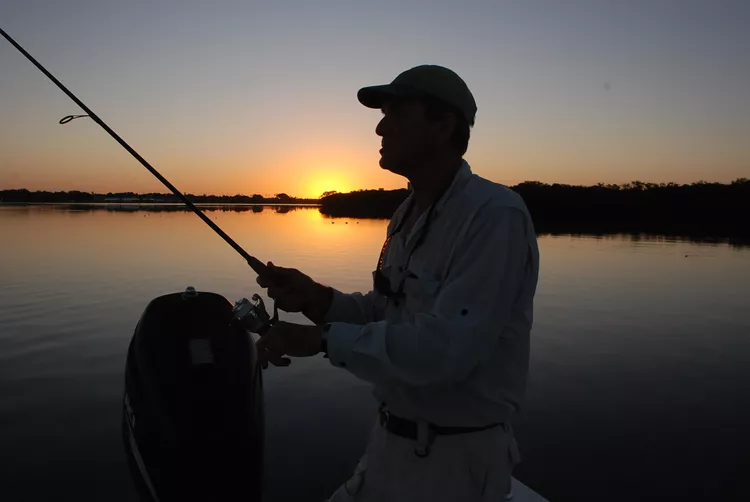Summary:
Practical Tips on Tackle, Lights, Noise, Safety, and More
Many anglers enjoy fishing after sunset, embracing the unique challenges presented by the night. Different regions, times of year, and types of water contribute to the experience, whether it involves casting surface lures for largemouth bass or trawling for deep-water salmon with glowing lures. Engaging in night fishing requires a different approach than fishing during daylight.
1. Learn to Adapt to No Light
While day fishing allows for visibility of your lure and line, the night demands a more intuitive approach. Black lights can be utilized to illuminate fluorescent lines, but reliance on them is minimal among modern anglers. Instead, focus on developing a feel for your tackle using sensitive rods and appropriate lines.
Visibility varies greatly; moonlit nights enhance sight, whereas dark or overcast nights can be more challenging. Interestingly, some believe that bright nights may not always yield better fishing results. Keeping artificial lighting to a minimum can be beneficial for certain types of fishing. Locations that receive natural light, like docks and piers, may attract smaller fish, which can, in turn, lure larger predators, especially in saltwater environments. Regardless, a small headlamp is an essential tool for night fishing, allowing hands-free use with minimal light disruption; models with red or green settings are particularly advantageous as they are less likely to spook fish.
2. Rig Several Rods
To enhance your night fishing experience, keep multiple rods prepared with different lures or baits. This approach minimizes the need for lighting when re-rigging tackle. If you’re on a bait-casting setup and encounter a backlash, simply switch to another already-rigged rod. If backlashes are frequent, consider utilizing spinning gear for night fishing, offering greater ease without requiring precise lure placement.
3. Get to Know Your Area
Before heading out on a fishing trip to an unfamiliar location, invest the time to explore the area during daylight. Familiarity with potential obstacles and sketching a rough map can significantly improve your fishing effectiveness. Taking a slow approach to casting and working the area thoroughly is typically more productive than rushing around.
4. Keep Noise to A Minimum
In a motorboat, maintaining silence is crucial. Noisy movements—such as starting the motor, shifting equipment, or dropping anchors—can disturb the fishing area. Aim to drift to your fishing spot with the motor off, and minimize movements while aboard to maintain a stealthy presence.
5. Be Extra Safety Conscious
In the darkness, landing and unhooking fish, particularly those with multiple hooks, poses unique challenges. Always sit down for stability when handling fish. Be cautious when moving about, as navigating in low light increases the risk of falling overboard. Maintaining awareness of your surroundings is critical; unexpected collisions with objects can easily throw you off balance. Organize your space, keeping essential items and lures secure to avoid tripping hazards.
A high-powered flashlight is vital for signaling your presence to approaching boats, especially in small vessels without navigational lights. Remember, when under power, always activate your bow and stern lights.
Above all, respect the water and the unpredictable power of nature. In difficult situations, assistance may not be readily available.





